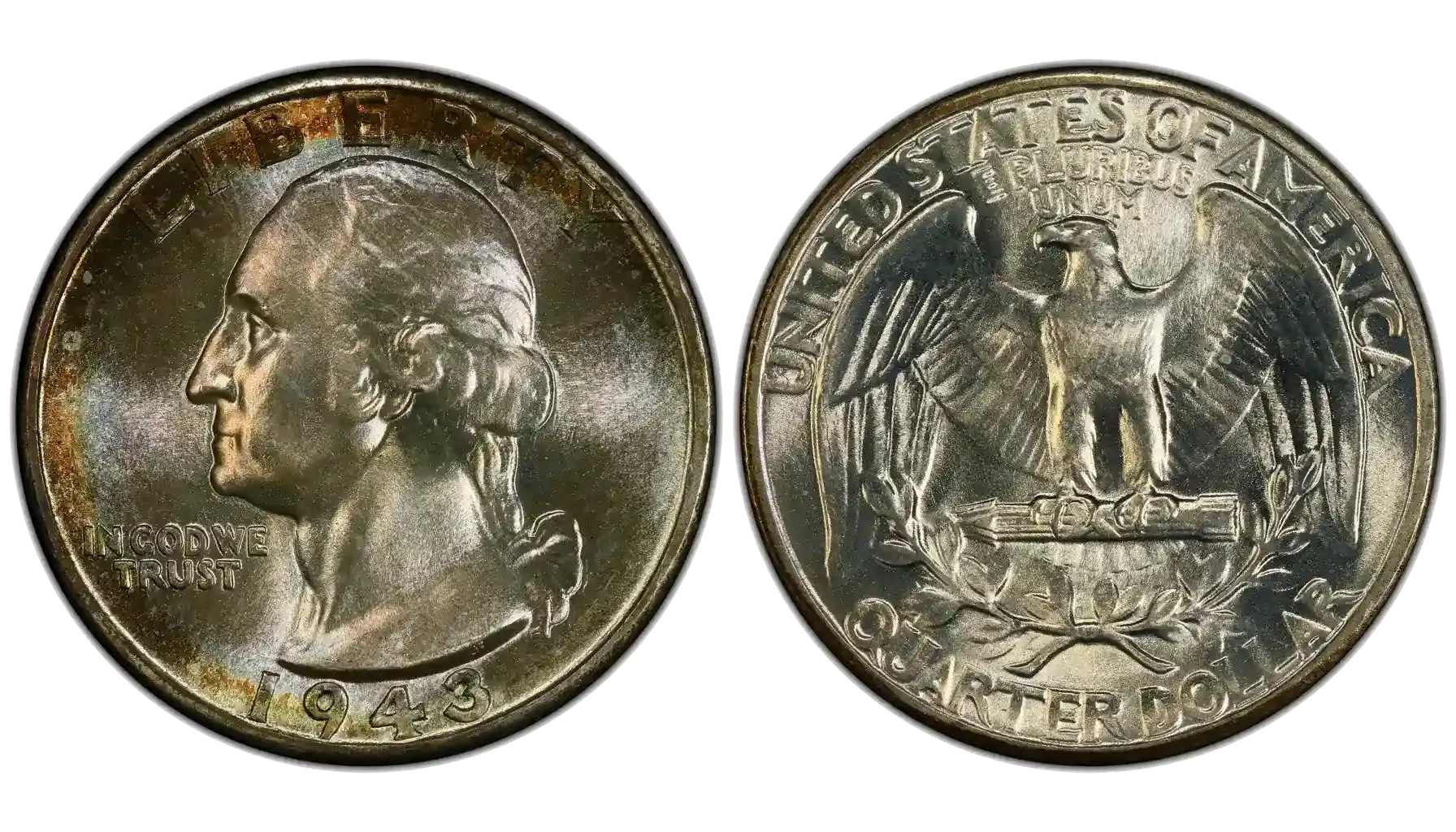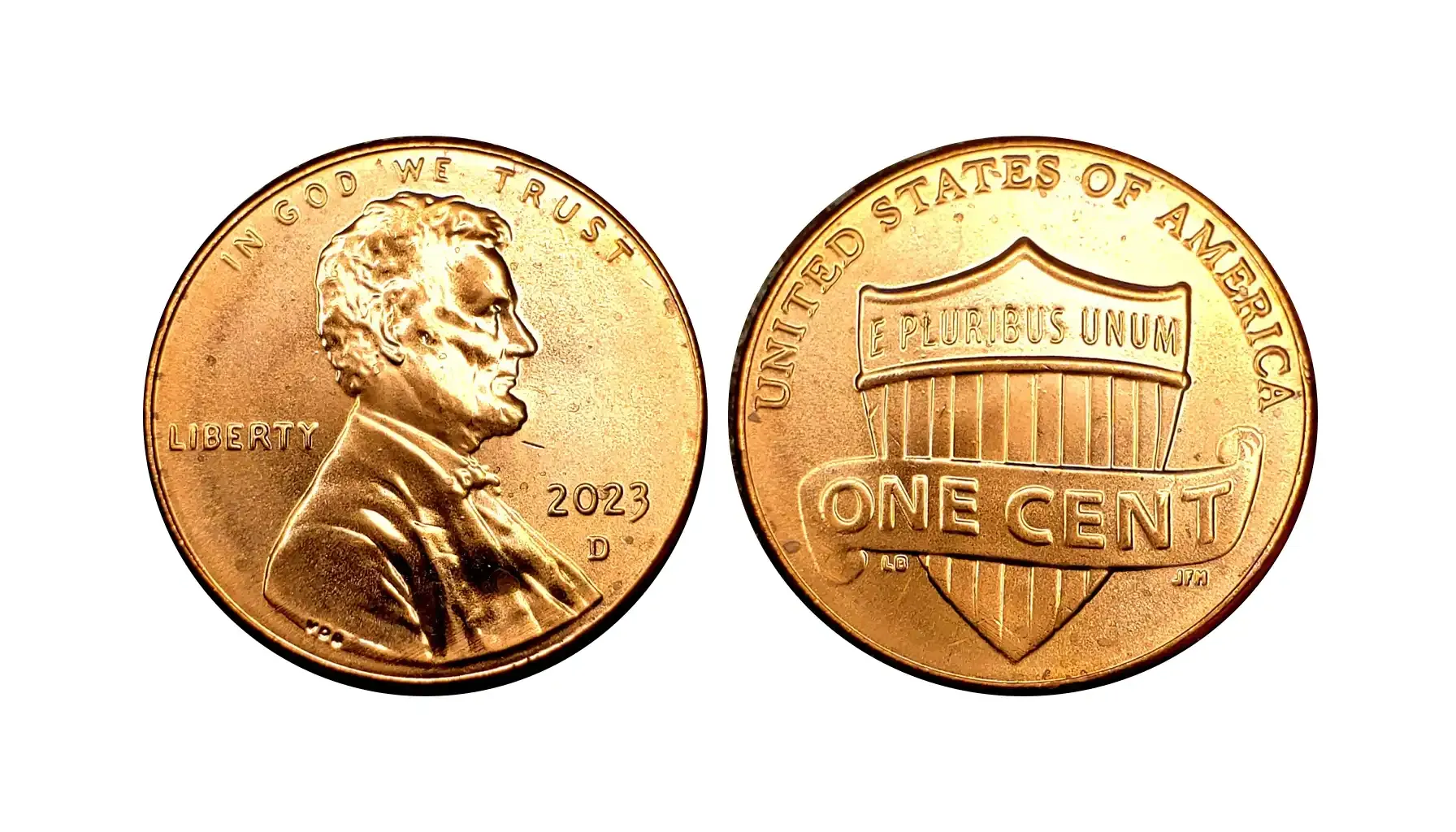Contents:
Coins that were minted in the XXI century are rarely considered valuable – it is the fate of the long-gone relics. However, the realm of modern numismatics is quite sophisticated, dazzling with both average units of currency of no particular interest and exclusive coins that may captivate even the most fastidious collectors.
Pennies released in 2001 were born out of the turbulent times, and their significance is predefined by historical events that shaped the early years of the new millennium. So, which features identify these coins as valuable? Which 2001 penny errors may be worth a fortune? And how expensive can they get over time?
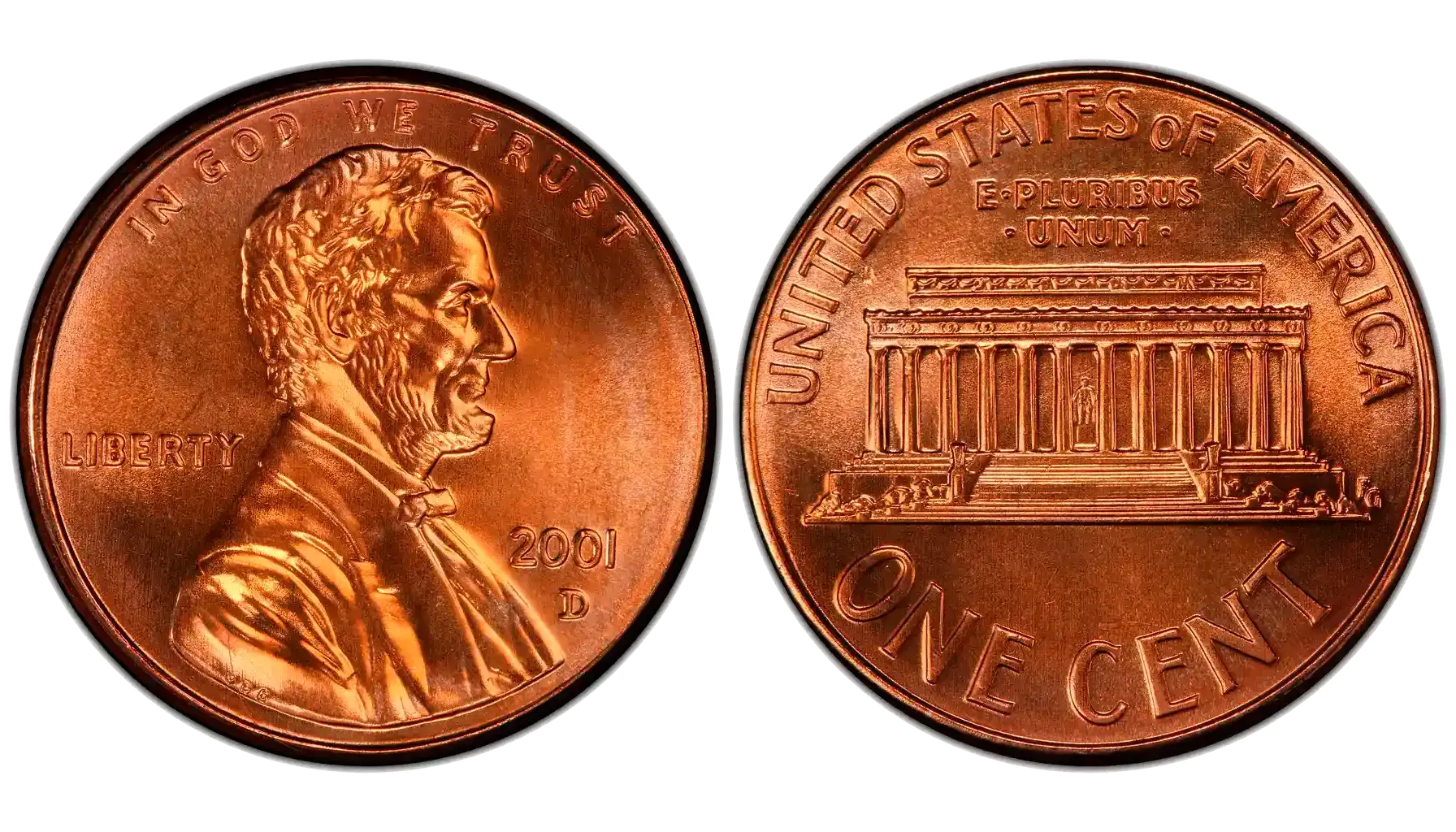
Brief History of the Lincoln Cent
The Lincoln cent is a unique creation that is considered the longest-running design in the history of US coins. As such, it was initially released in 1909 to commemorate the 100th anniversary of Abraham Lincoln’s birth and could be proudly pronounced the first American coin featuring a real historical figure rather than an allegorical image or symbol (as it was before).
The original design of the 1909 Lincoln cent, created by Victor David Brenner, depicted Lincoln's right-facing portrait on the obverse and two stalks of wheat surrounding the inscription "ONE CENT" on the reverse (this is the primary reason for its naming – the "Wheat Penny").
The reverse design remained in use well until 1958. However, in 1959, 50 years after the release, the reverse was altered to the Lincoln Memorial, designed by Frank Gasparro. This version, in turn, was used until 2008.
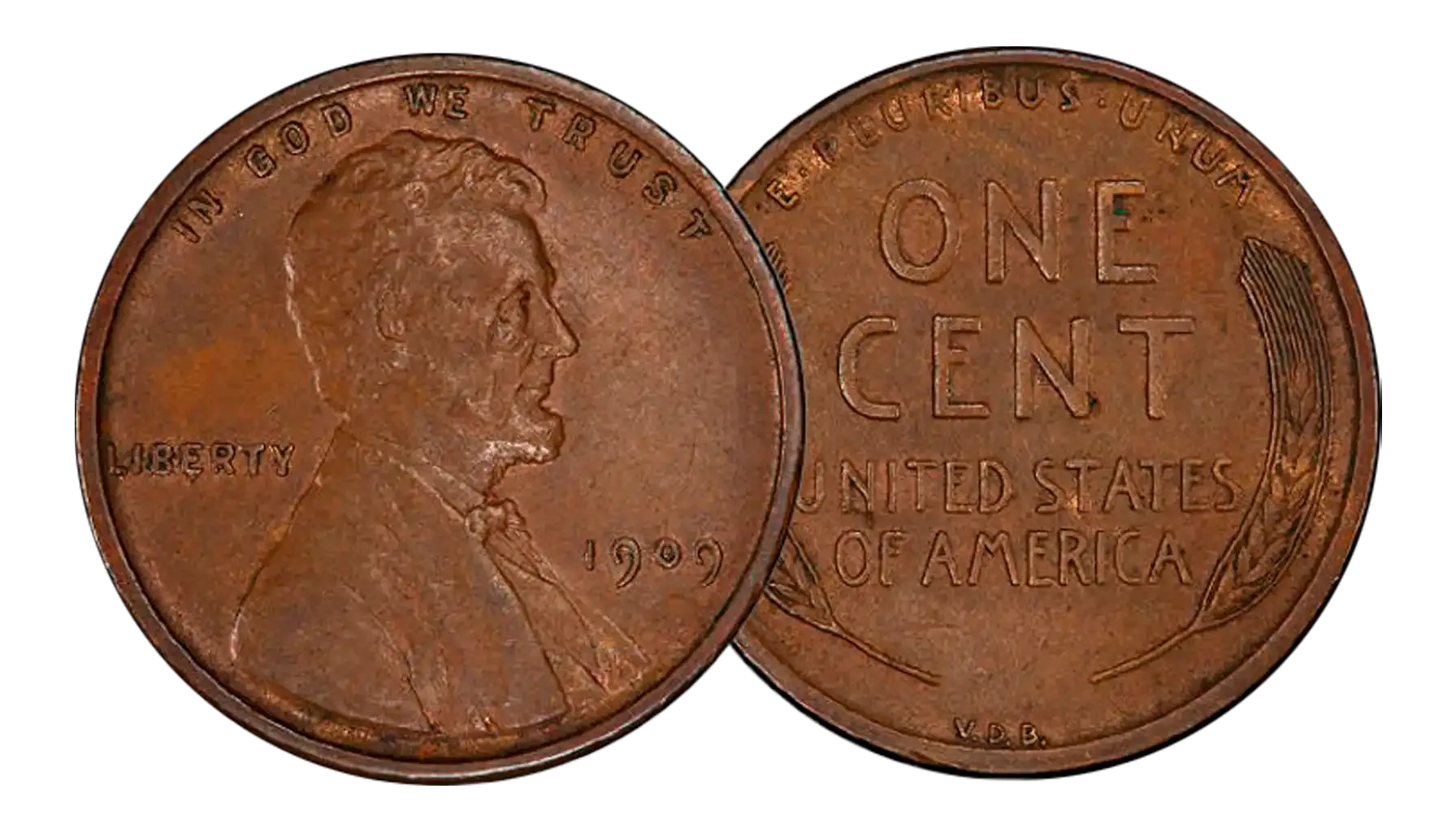
2001 Penny Overview
Although widely circulated, pennies issued in 2001 represent one of the last years of the Lincoln Memorial reverse, which had decorated this piece for nearly five decades. And indeed, it may appear conventional at first sight. However, its differences in strike quality, mint marks, and occasional mint errors may make sense anyway. But what does it look like?
Obverse: The obverse (front) features a right-facing portrait of President Abraham Lincoln. Above his head, one may see the traditional motto "IN GOD WE TRUST" with the word "LIBERTY" to the left and the date "2001" to the right. Below the date, coins should bear a mint mark, though Philadelphia-minted instances carry no mint mark at all.
Reverse: The reverse, on its part, showcases the Lincoln Memorial, which is framed by the inscriptions "UNITED STATES OF AMERICA" above and "ONE CENT" below, with the national motto "E PLURIBUS UNUM" between the roof and Lincoln’s name. Inside the memorial is a subtle but notable feature – the miniature Lincoln statue located between the columns.
The Main Characteristics of the 2001 Penny | |
Denomination | 1 cent |
Composition | Copper-plated zinc (i.e., 97.5% zinc, 2.5% copper plating) |
Weight | 2.5 grams |
Diameter | 19.05 mm |
Thickness | 1.52 mm |
Edge | Plain |
Mint Marks | None for Philadelphia, “D” for Denver, and “S” for San Francisco |
Mintage Figures and Types by Mint
Across three major minting facilities in the US (i.e., Denver, San Francisco, and Philadelphia mints, respectively). There were produced large quantities of Lincoln cents in 2001. In fact, the majority of these pieces were designed for general circulation, but some high-grade examples and proof versions may be relatively captivating when it comes to modern coinage.
2001 Penny No Mint Mark
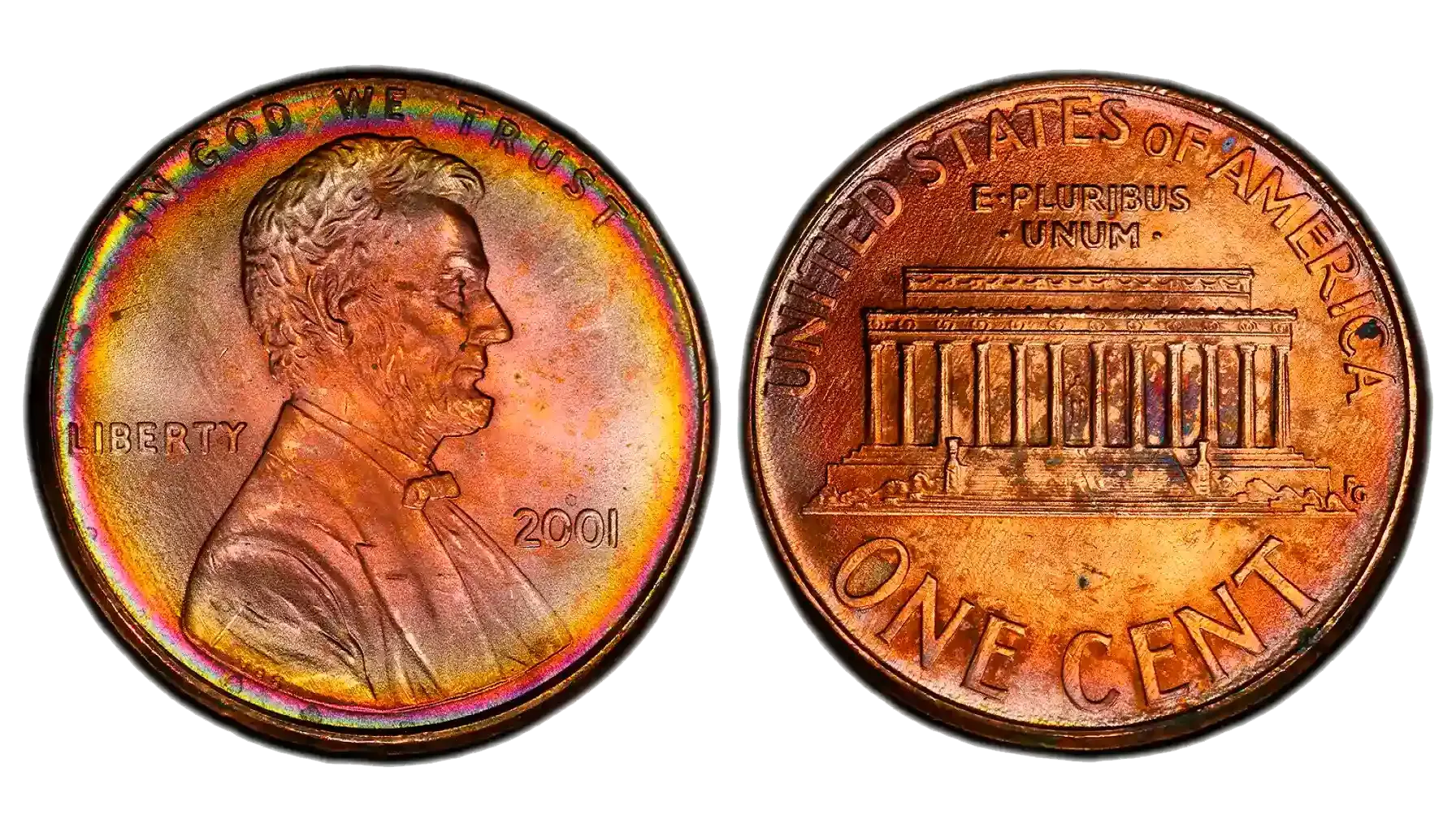
Produced by: Philadelphia Mint
Mintage Figures: 4,959,600,000
Auction Record: $411 for an MS69
This version bears no mint mark, as is customary for coins struck in Philadelphia. With nearly 5 billion pieces produced, it is highly common in circulation. However, collectors prize high-grade examples, especially those graded MS68 or higher.
2001 D Penny
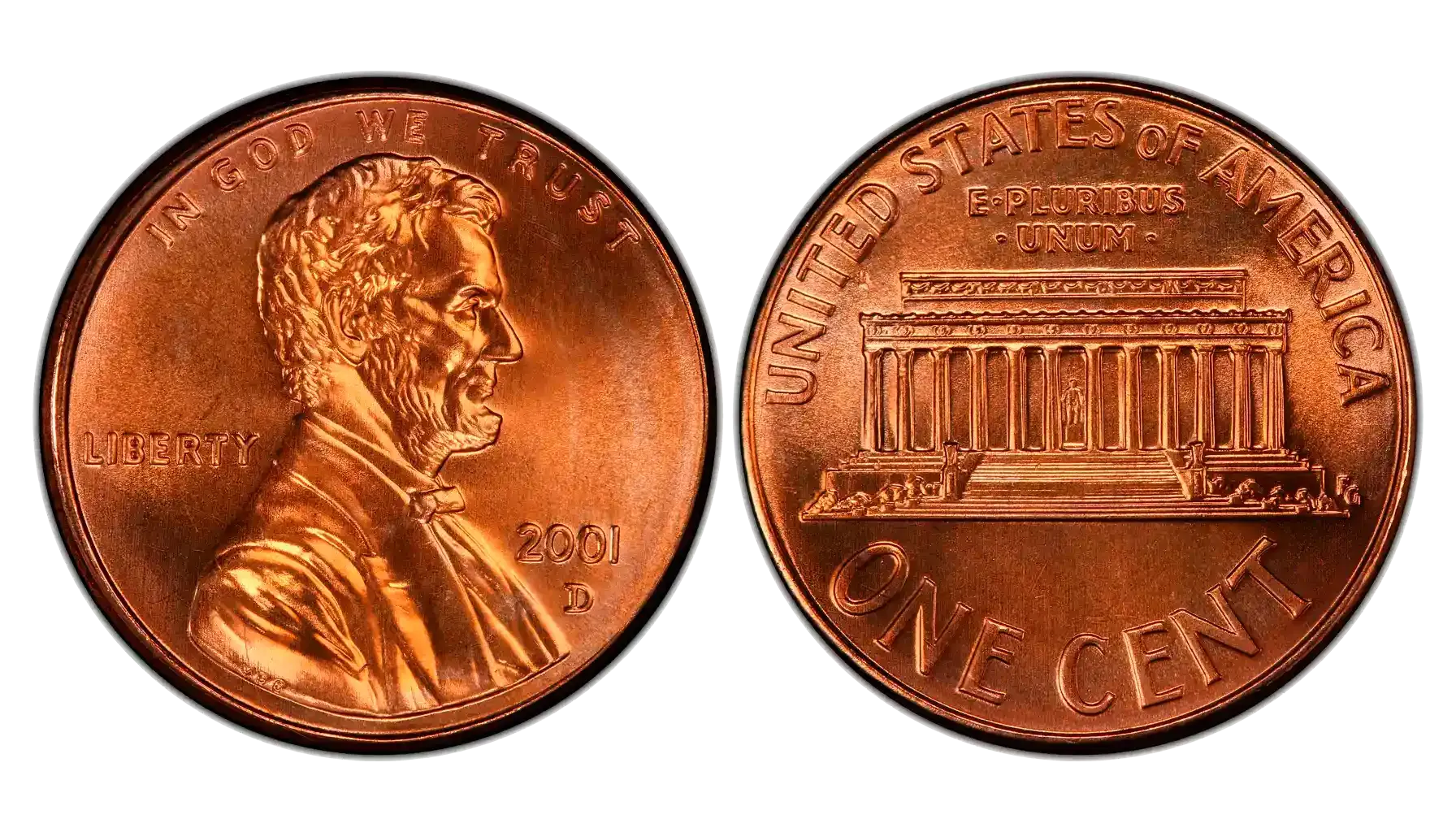
Produced by: Denver Mint
Mintage Figures: 5,374,990,000
Auction Record: $1,150 for an MS69
The Denver Mint struck over 5.3 billion cents in 2001, slightly surpassing Philadelphia's output. These coins can be distinguished by the “D” mint mark below the year, and their pristine uncirculated examples can be worth thousands of dollars, which is quite immense.
2001 S Penny (Proof)
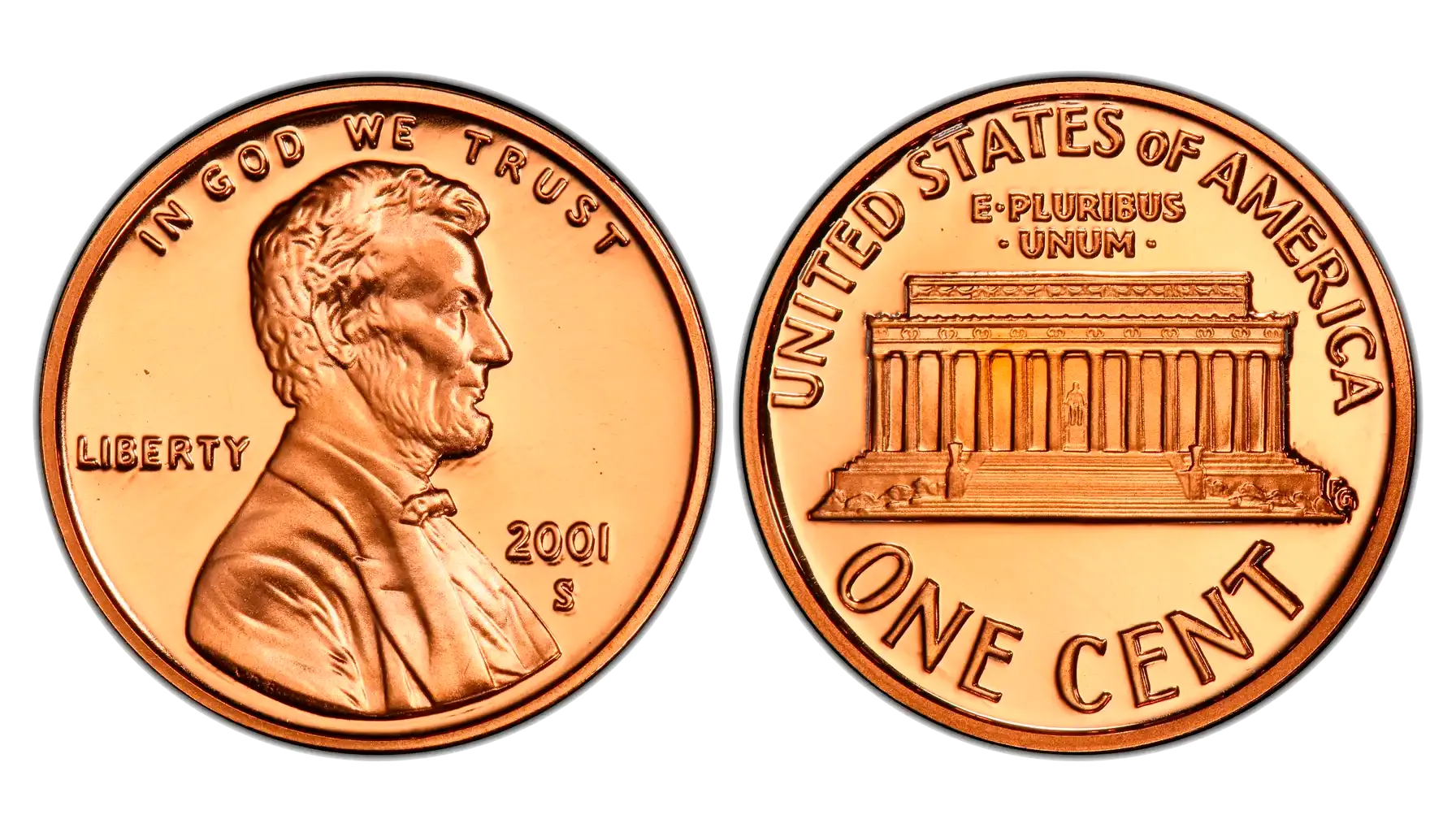
Produced by: San Francisco Mint
Mintage Figures: 2,294,083
Auction Record: $863 for a PR70
The San Francisco Mint exclusively produced proof versions of the Lincoln cent for collectors (not for circulation). These were struck with specially prepared dies on polished planchets, resulting in a sharp, mirror-like finish.
Designations That Matter
When taking a look at coins, one may notice that they differ in color. For sure, surface color and finish designations can significantly impact market value. But how to identify which instance is to be more valuable than its counterparts?
Regular Issues
For circulation-strike coins, color designations reflect the amount of original red mint luster that remains on the copper-plated surface:
BN (Brown): The coin has oxidized to a predominantly brown color.
RB (Red-Brown): The coin exhibits a mix of red and brown tones, roughly 15% to 85% of the original red luster remains.
RD (Red): These instances retain at least 85–95% of their original red luster of excellent preservation.
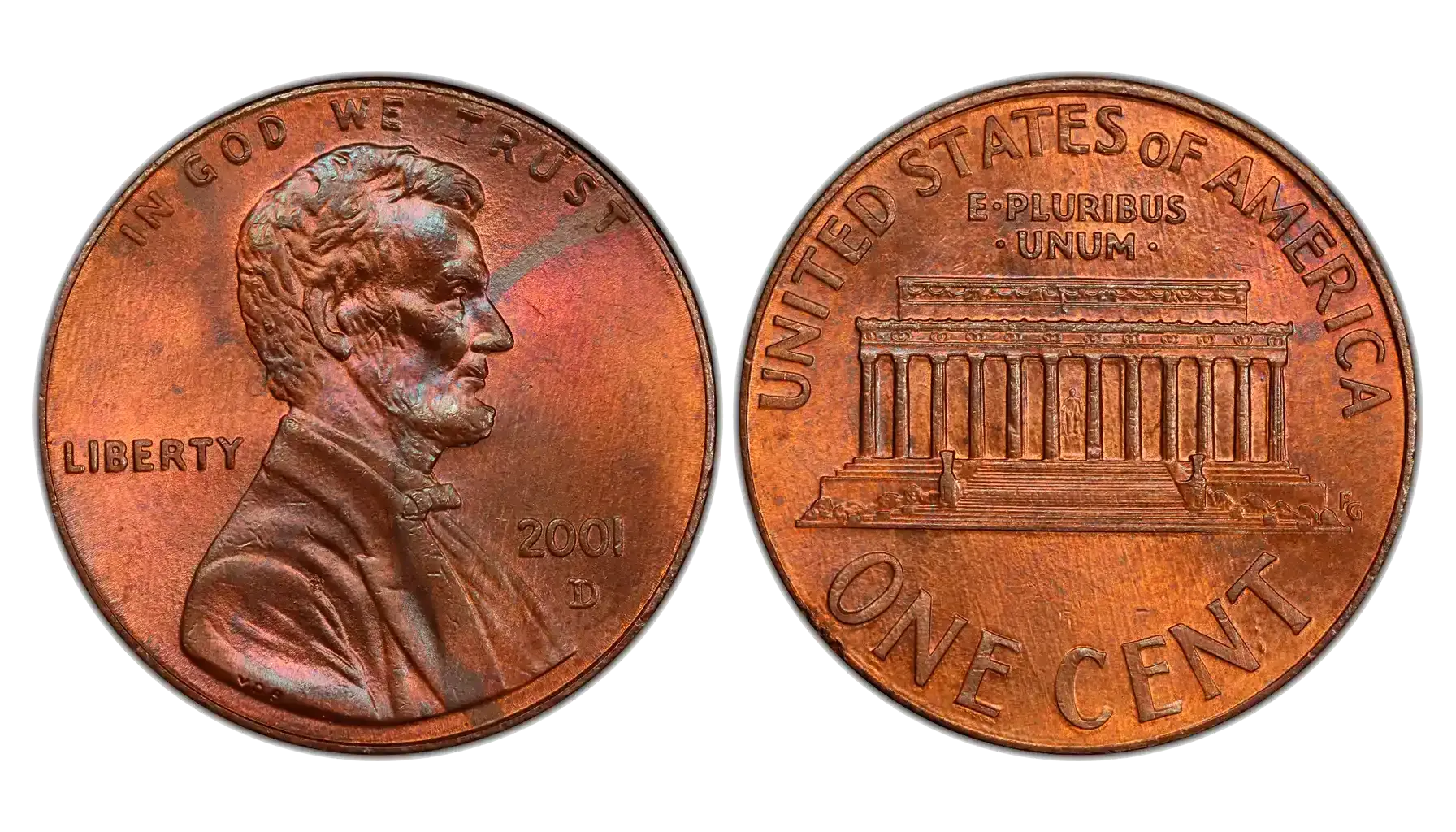
Proof Issues (San Francisco Mint)
Proof versions usually receive additional designations based on the contrast between the raised features and the mirrored fields:
CAM (Cameo): This designation indicates noticeable frost on the design elements with moderate contrast against the mirrored background.
DCAM (Deep Cameo): DCAM issues tend to exhibit strong, frosted designs that sharply contrast with deeply reflective fields.
2001 Penny Error List with Pictures (Notable Issues Only!)
1 Cent Mated Pair Error

Estimated Value: $2,500
This rare and dramatic error occurs when two planchets are struck together in the same striking chamber, creating a mated pair, i.e., a pair of coins that fit together due to simultaneous striking. These are exceptionally rare and may command higher prices as a result.
Cent Struck on Dime Planchet (Double Denomination)
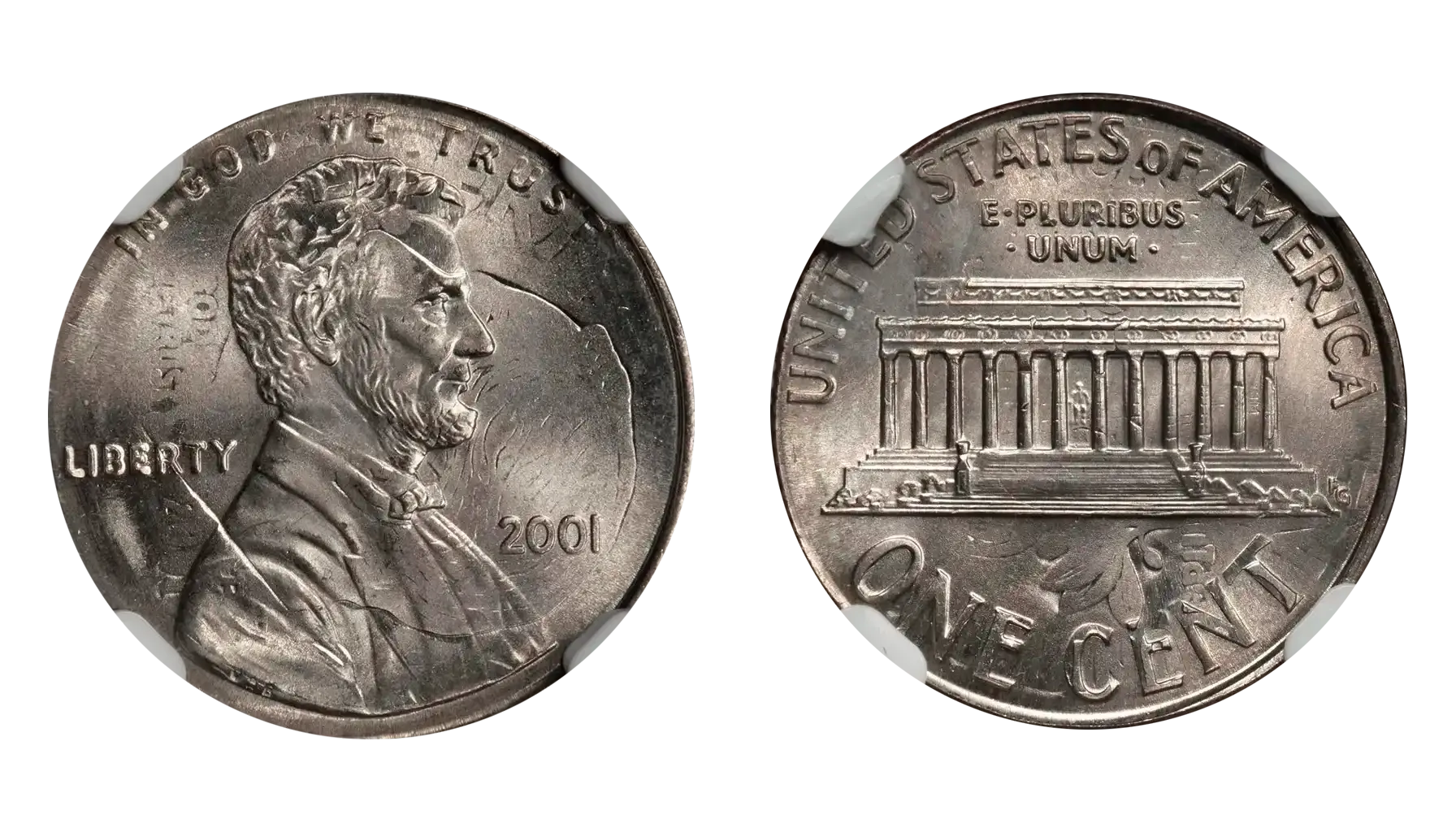
Estimated Value: $1,900
A double denomination error happens when a coin that has already been struck (in this case, a dime) is accidentally struck one more time with cent dies. This results in a chaotic but fascinating mix of two coin designs on one planchet.
Off-Center Strike with First-Strike Brockage on Reverse
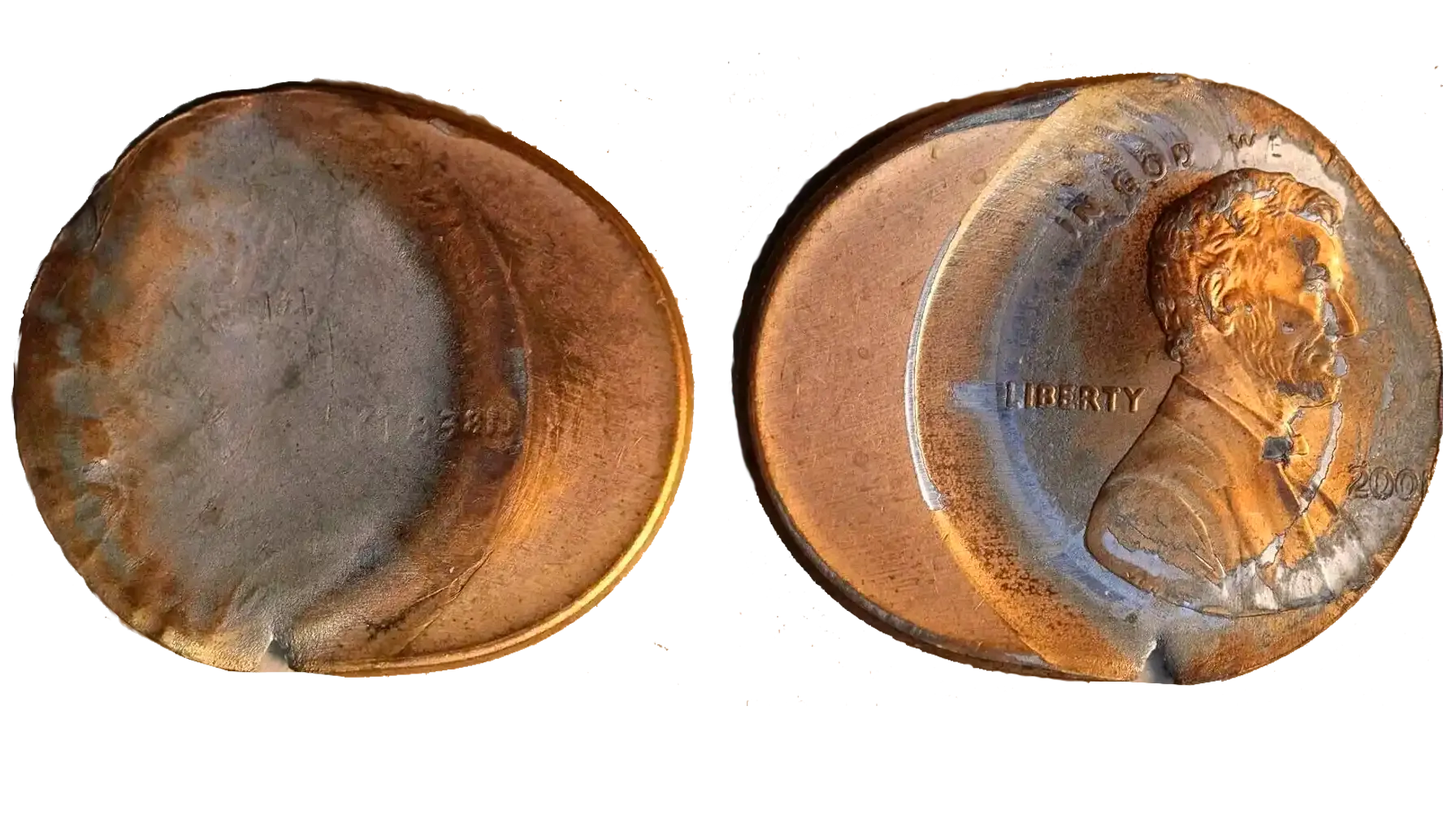
Estimated Value: $800
This instance was struck off-center and features a brockage, where one side shows a mirrored, incuse impression caused by another coin sticking to the die. In this rare case, the reverse shows the first-strike brockage, making it even more eye-catching.
Large Broad Struck Error
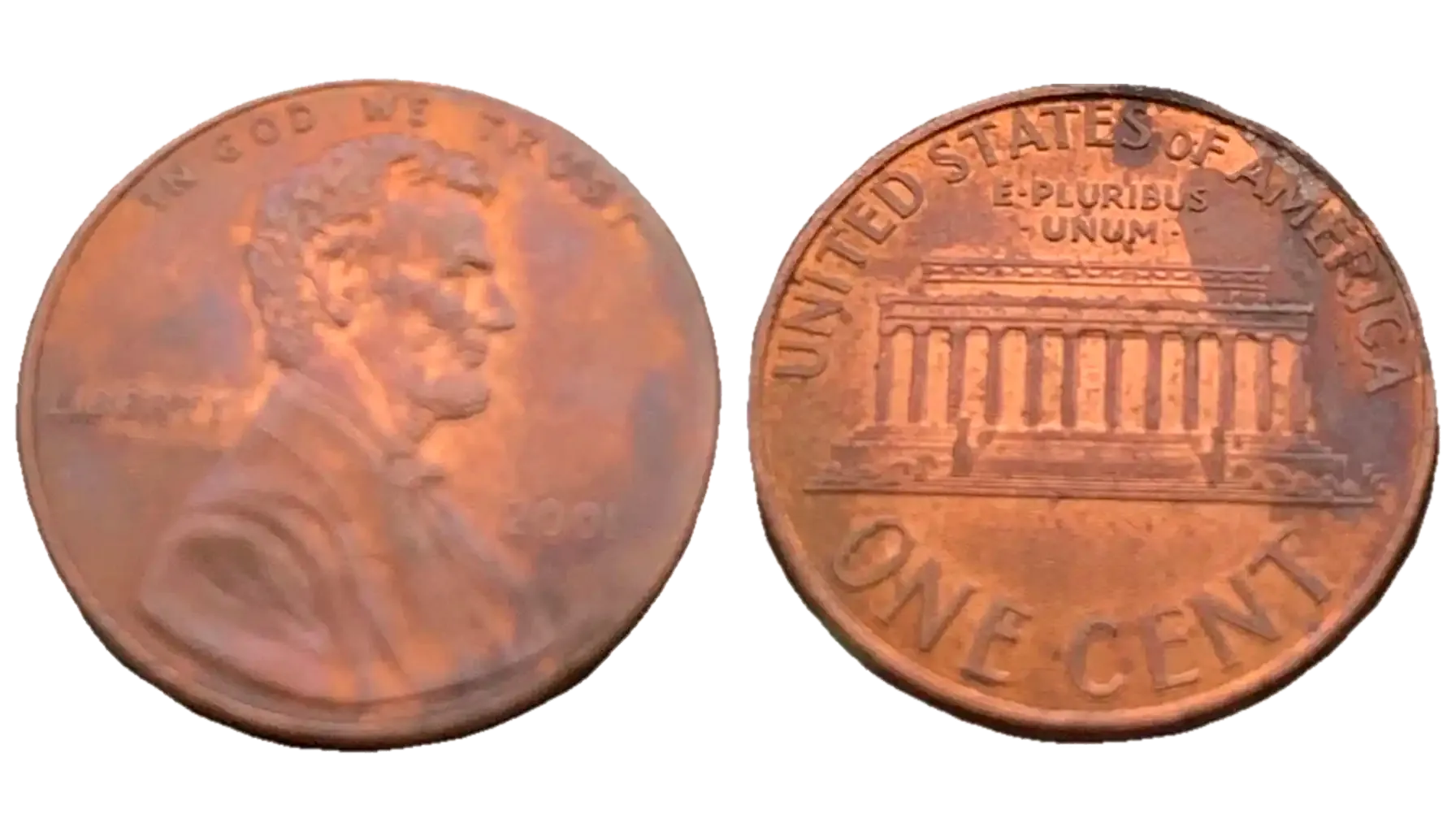
Estimated Value: $550
A broad strike occurs when a coin is struck without the retaining collar that gives it a defined edge. The result is a coin that appears stretched or "pancaked" beyond normal diameter (this can be observed on the side featuring Lincoln).
How Much Is a 2001 Penny Worth? General Value Ranges
Auction records are exciting to read about, but they do not always reflect what most collectors will actually pay. The best auction platforms are mainly about competitive settings where bidding wars inflate prices – this is how it works. In reality, the true 2001 penny value depends on factors such as condition, color designation (BN, RB, RD), mint mark, and whether the coin is a regular strike or a proof.
These are the general value ranges that should be expected when one wishes to buy or sell such a coin.
2001 (No Mint Mark) | Circulated | $0.01 (face value) |
MS60–MS65 | $0.10 – $1.50 | |
MS66–MS68 | $3 – $35 | |
MS69 | Up to $400+ | |
2001-D | Circulated | $0.01 (face value) |
MS60–MS65 | $0.10 – $1.50 | |
MS66–MS68 | $3 – $40 | |
MS69 | Up to $1,000+ | |
2001-S Proof | PR65–PR68 | $2 – $8 |
PR69 | $10 – $25 | |
PR70 | $50 – $100+ |
Should You Keep or Sell?
Should you come across a rare 2001 penny, do not hurry to throw it away. Take a look at its appearance. Mind that for circulated coins without errors, it is usually best to spend or save them unless they are in excellent uncirculated condition. However, if your penny shows signs of being a rare variety or a possible mint error, it may be worth much more than face value.
To get the best out of this experience, we have created Coin ID Scanner, a powerful app designed for collectors of all levels of proficiency. Coin ID Scanner is about precision, convenience, and love.
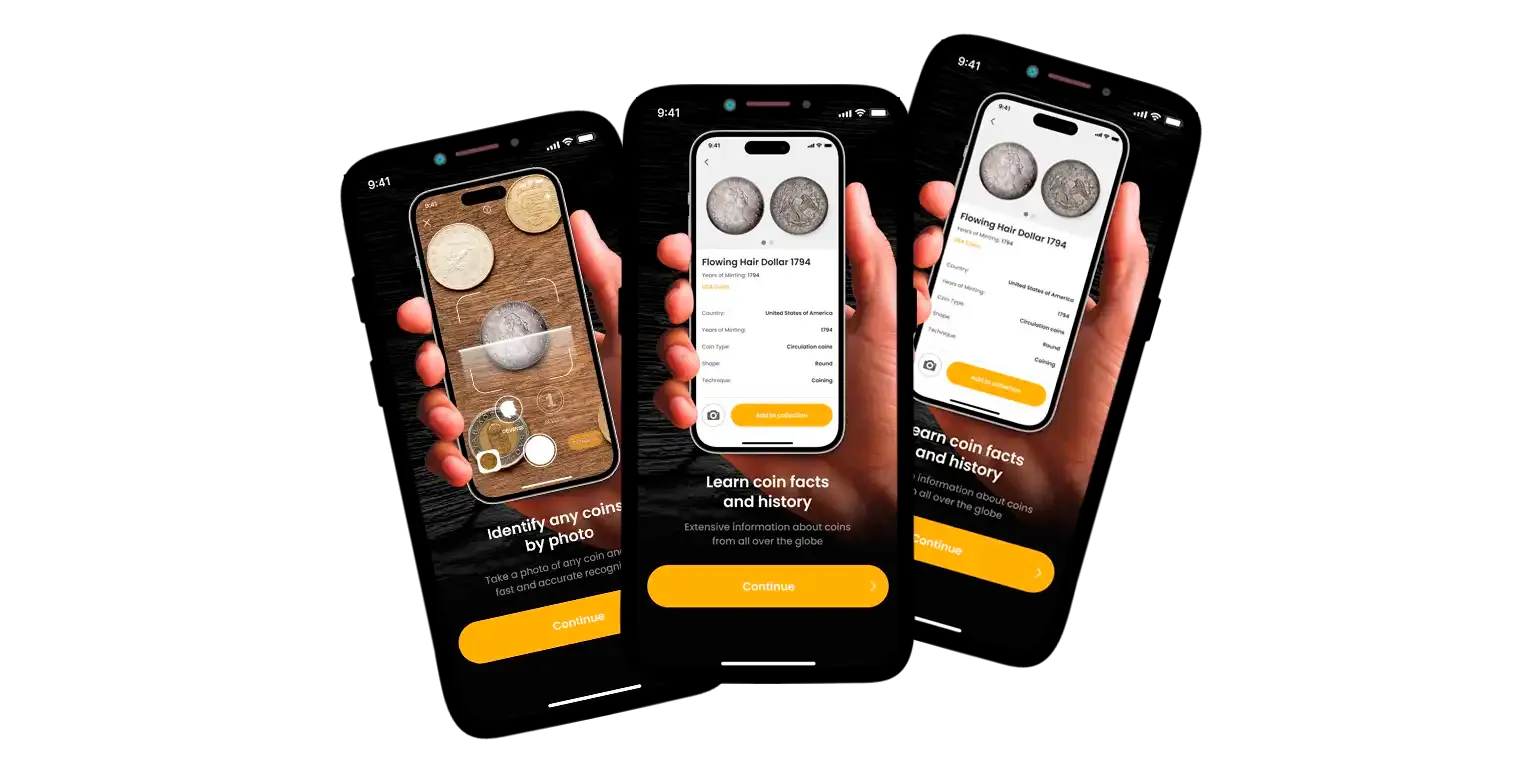
With Coin ID Scanner installed on your phone, you instantly get:
Photo Recognition: Just snap a picture of your coin, and the app will identify the date, mint mark, and type instantly with the use of advanced image recognition.
Value Estimator: Get real-time value estimates based on current market data and your coin’s condition taken into consideration.
Error Detection: The app may detect potential mint errors and anomalies by analyzing design features and strike patterns.
Database Access: Instantly compare your coin to thousands of verified examples with images, pricing, and grading info.
Collection Tracker: Save, organize, and manage your personal coin collection within the app.
Let your collections expand and judge each coin on its own merits!

